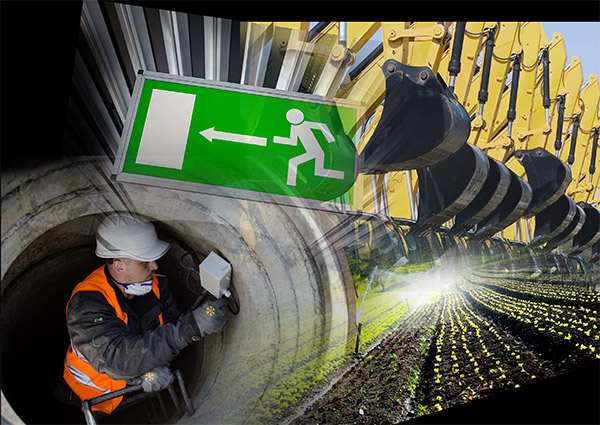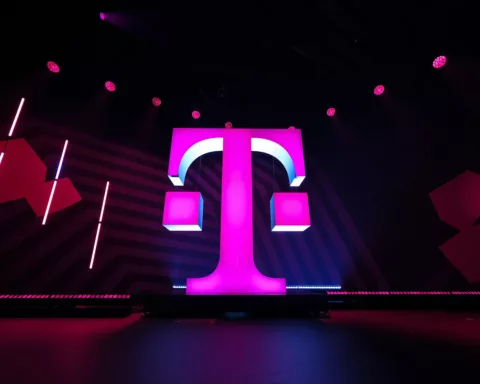With the right network technology, companies are more productive and competitive. The Telekom relies on licensed frequencies. Safe and compatible, simply by plug & play. Now Telekom’s machine and sensor network for the Internet of Things (NarrowBand-IoT, NB-IoT for short) are picking up even more momentum. Demand is increasing, also internationally. New roaming partnerships pave the way for global IoT applications.
Telekom’s NarrowBand-IoT has been broadcasting in Europe since 2019. LTE-M was activated in summer 2020. The application scenarios decide which IoT network is the best choice. And factors such as battery life, data volume, latency times or the desire for international availability. “With the new network technologies, the Internet of Things is growing even faster. Almost unlimited possible uses offer advantages for industry and everyday life,” says Dennis Nikles, Chief Commercial Officer (CCO) Deutsche Telekom IoT. “Availability around the world is essential, also for stable supply chains. To this end, we are quickly entering into further roaming partnerships, including beyond Europe.”
New Roaming Partnerships
NB-IoT roaming is now available in 20 countries via Telekom, including the USA. To this end, the group signed roaming agreements with Vodafone, Telia, Orange and Telenet (Belgium), Swisscom and Telecom Italia. T-Mobile’s US network can now also be used. LTE-M is now available through Telekom in ten countries. With AT&T also in the USA, also with NTT DoCoMo in Japan.
The variety of areas of application is demonstrated by numerous new applications across all industries. Whether in agriculture, industry, public safety or building management: The Internet of Things is omnipresent today. Locating and maintaining production processes or machines remotely, tracking deliveries or intelligently controlling the water and power supply: all of this ultimately saves resources of all kinds. For a sustainable economy and society.
Smart irrigation in Europe’s garden
Hidroconta is one of the leading Spanish manufacturers of irrigation and measuring systems. The offer is aimed at municipal water management and agriculture. The devices are now networked via NB-IoT from Telekom. An integrated SIM card keeps an eye on water consumption. Time-consuming and costly on-site visits are no longer necessary. For example, in Madrid: networked devices from Hidroconta monitor the drinking water supply for the more than 6.5 million inhabitants. The consumption data is processed by a central Hidroconta IoT platform. NB-IoT also works in the province of Murcia: It is the largest organic growing area for vegetables in Europe. The systems from Hidroconta control the resource-saving irrigation via the Telekom NB-IoT network. To do this, sensors in the ground report the required water requirement. Now Hidroconta is planning the international rollout. And here, too, relies on Telekom’s secure international IoT network.
Building Security with NB-IoT
Green and white light boxes show the way to emergency exits everywhere: in schools, kindergartens, companies, in retail or other public facilities such as parking garages or train stations. These helpers get their electricity from a single battery. Fischer Akkumulatorentechnik GmbH specializes in safety lights. Now a standard regulation challenges the operators of buildings: The function of the emergency lights must be monitored from a central point. In addition, battery operation must really “rest” during rest periods (for example during school holidays): This prevents the battery from being completely discharged. The cabling of each individual lamp is not very profitable here. Fischer Easy-NB fulfills these standards with the NB-IoT network from Telekom: A central website displays the luminaire and battery status as well as all test results and error messages. Easily accessible at any time via the mobile device or in the office via the PC. This eliminates the need to set up local networks or gateways. In addition, NB-IoT is characterized by reliable, deep building penetration.
Slowing down storm damage smartly
Storm events are increasingly posing a threat to public infrastructure and security. Water does not run off; roads are quickly flooded. On-site maintenance of the shafts involves risks. At this point, networked sensors contribute to safety: the “Octopus” overflow warning system from Sensoneo measures the water level in a shaft to a depth of up to 25 meters. A sensor reports via NB-IoT from Telekom when the water level rises critically. A dashboard shows the recorded data. It is possible to react quickly and inexpensively from a distance. Sensoneo operates internationally and primarily develops intelligent solutions for waste management.
Know where the excavator is
The construction industry is also digitized. Sharemac specializes in digital construction equipment and project management. Construction machines are often only used at 60 to 70% capacity – the rest of the time they are idle on construction sites or in warehouses. That is why Sharemac developed the software SAM (Smart Asset Manager), with which devices and projects can be planned and managed. In this way, construction companies’ vehicle fleets are optimally utilized. Live location, operating hours, voltage: everything immediately. A telematics module on the construction equipment records all the necessary status data. Telekom’s NB-IoT network transmits the data to a central platform. The system sends status information automatically.
LTE-M for easy LoRaWAN installation
And Telekom is taking further steps on the way to a global, open Internet of Things: To this end, Telekom has entered a partnership with The Things Industries (TTI), a global LoRaWAN network provider. Like NB-IoT, LoRa is a narrowband network for IoT. It is based on license-free frequency bands and requires dedicated gateways. Pre-configured LoRaWAN gateways communicate with the TTI device and data platform via LTE-M. The use of LTE-M reduces the costs compared to 2G, 3G or LTE with inexpensive hardware and low usage costs. The gateways optionally support LoRa 2.4GHz for global use.The two new whitepapers provide information about the technologies, possible uses and security
• “NB-IoT, LoRaWan, Sigfox: An Up-to-Date-Comparison”
• “Comparison and Analysis of Security Aspects of LoRaWAN and NB-IoT”






